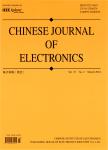Blind Equalization Using Coordinate Mapping for 4-PAM and 16-QAM Signals
Blind Equalization Using Coordinate Mapping for 4-PAM and 16-QAM Signals作者机构:Nanchang Institute of Technology
出 版 物:《Chinese Journal of Electronics》 (电子学报(英文))
年 卷 期:2014年第23卷第1期
页 面:124-128页
核心收录:
学科分类:0810[工学-信息与通信工程] 0808[工学-电气工程] 0809[工学-电子科学与技术(可授工学、理学学位)] 08[工学] 081001[工学-通信与信息系统] 0701[理学-数学]
基 金:supported by the National Natural Science Foundation of China(No.61102022) the Natural Science Foundation of Jiangxi Educational Committee of China(No.GJJ12632)
主 题:Blind equalization Constant modulus algorithm Coordinate mapping
摘 要:It is well known that the famous Constant modulus algorithm(CMA) presents a large steady-state Mean square error(MSE) for nonconstant modulus signals. In this paper a coordinate mapping approach for a4-PAM nonconstant modulus signal is described which can change the signal to an Offset QPSK(OQPSK) constant modulus signal. And a new algorithm based on this approach is proposed which is also suitable for a 16-QAM signal. For the 4-PAM and 16-QAM nonconstant modulus signals the proposed algorithm can achieve a zero steadystate MSE in a noiseless environment but CMA *** analysis and simulations results demonstrate the high performance of the proposed algorithm.



